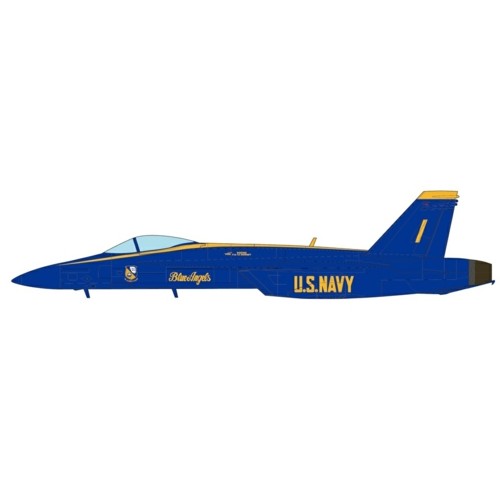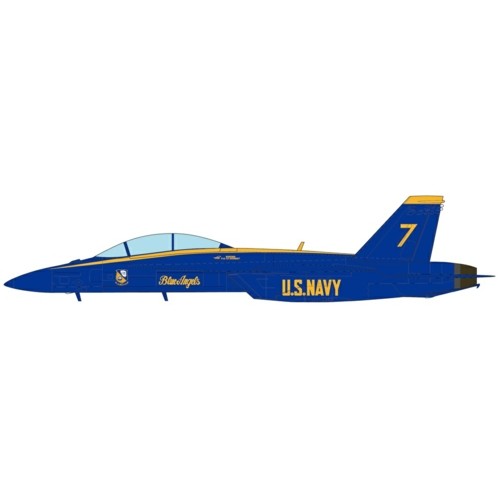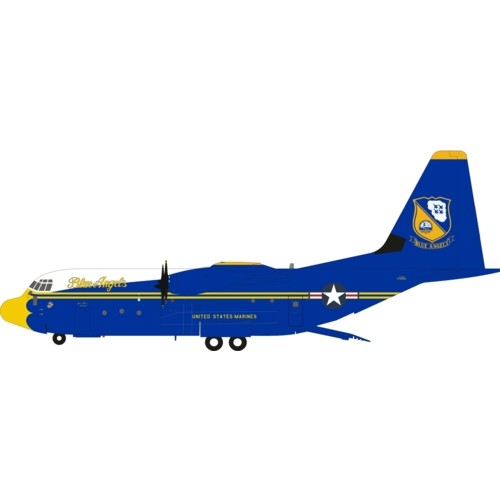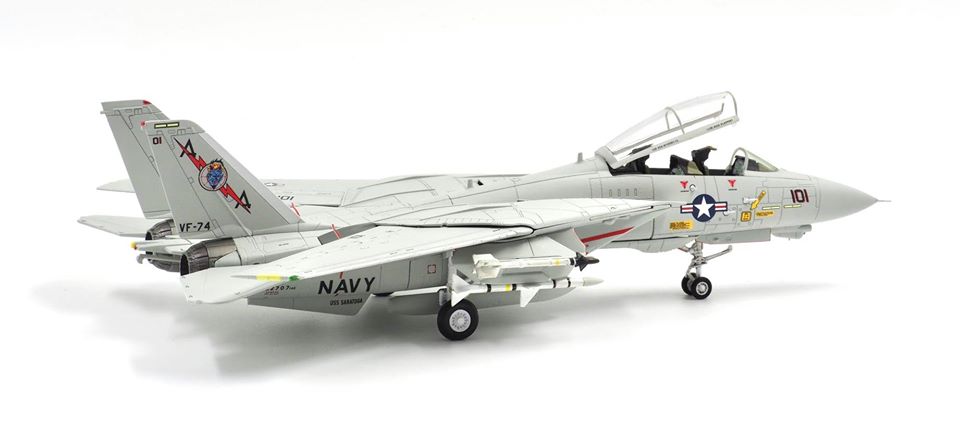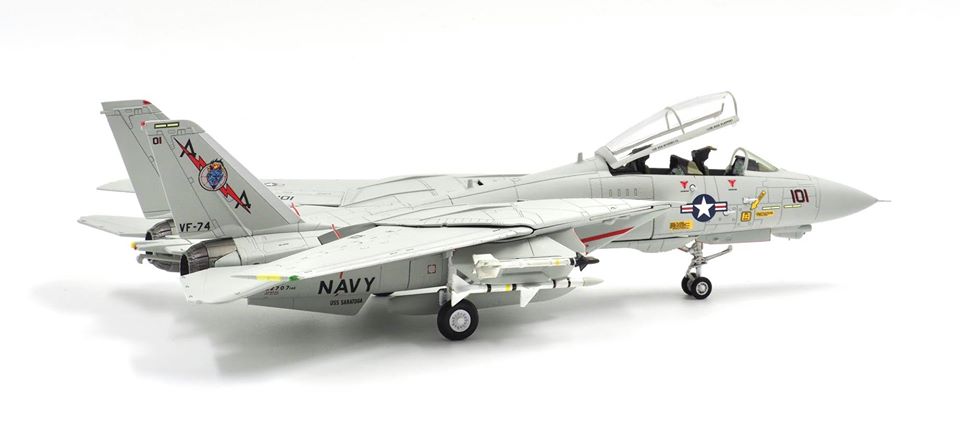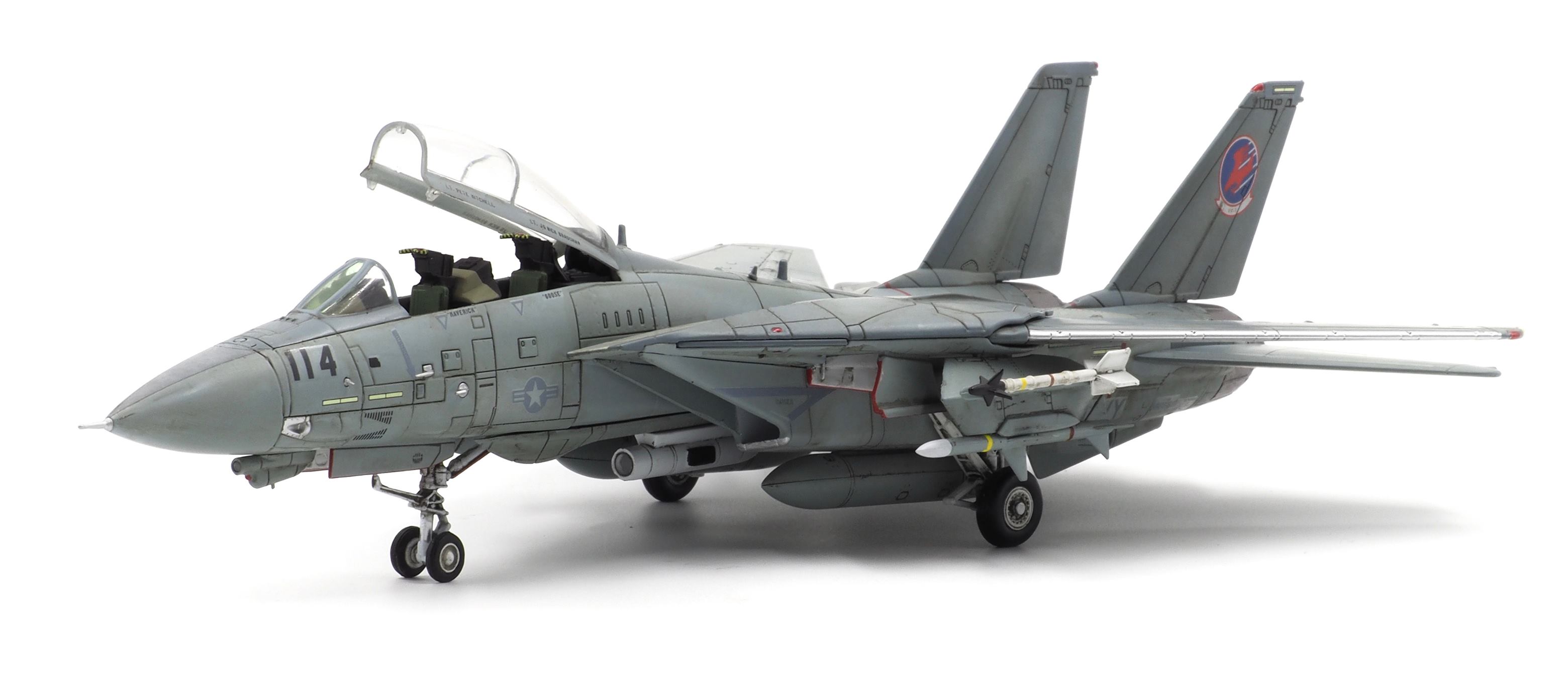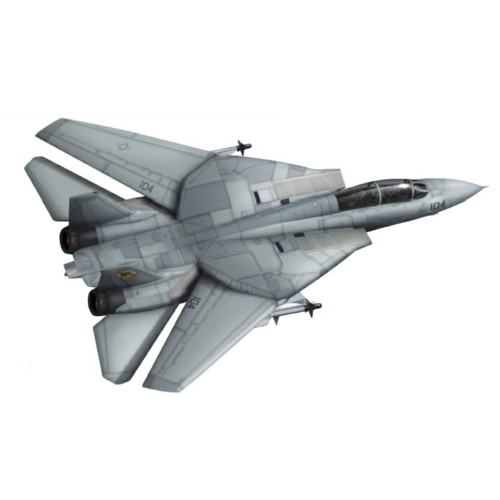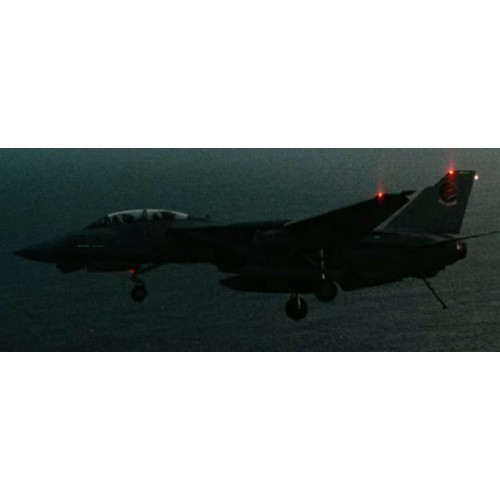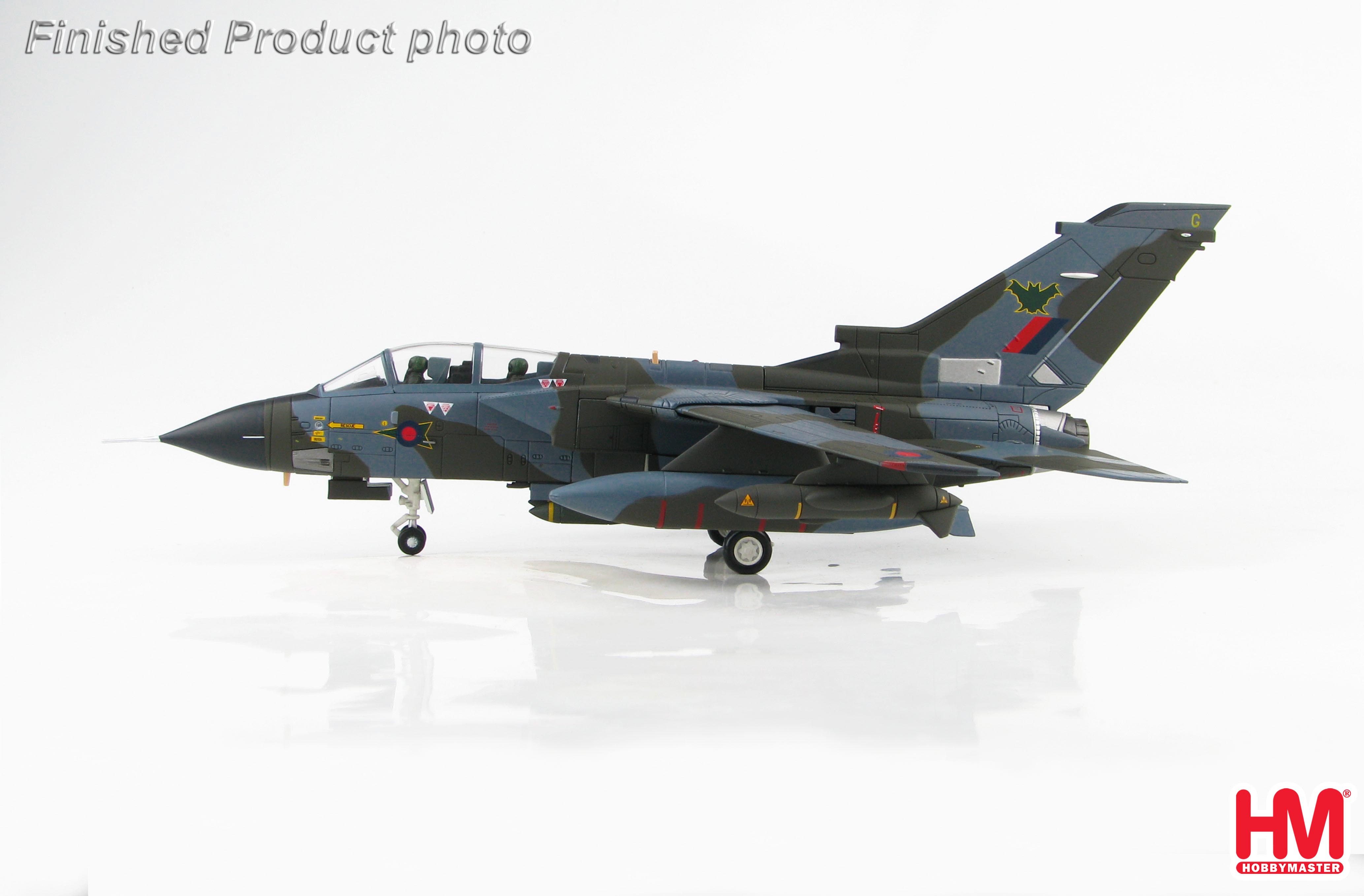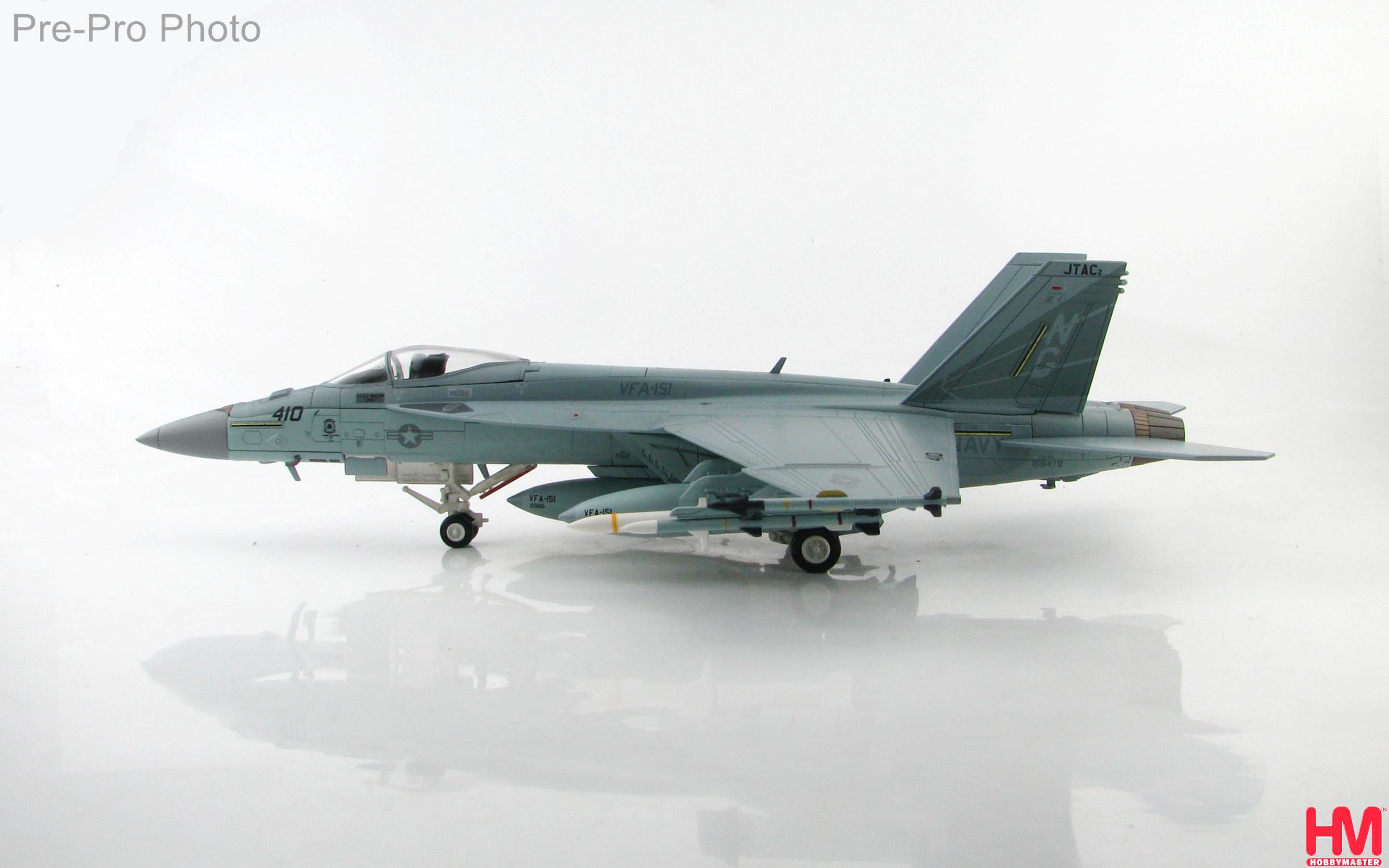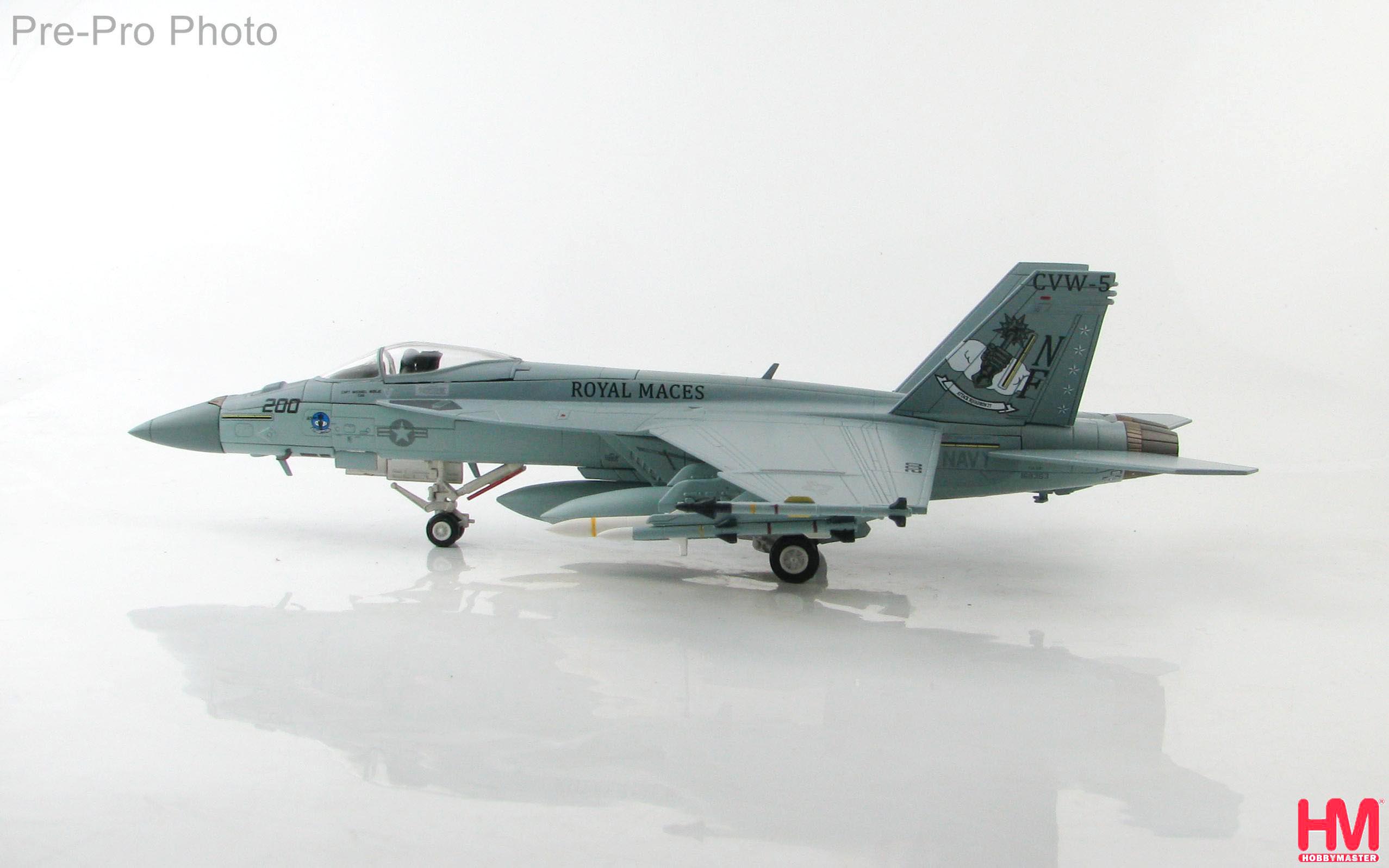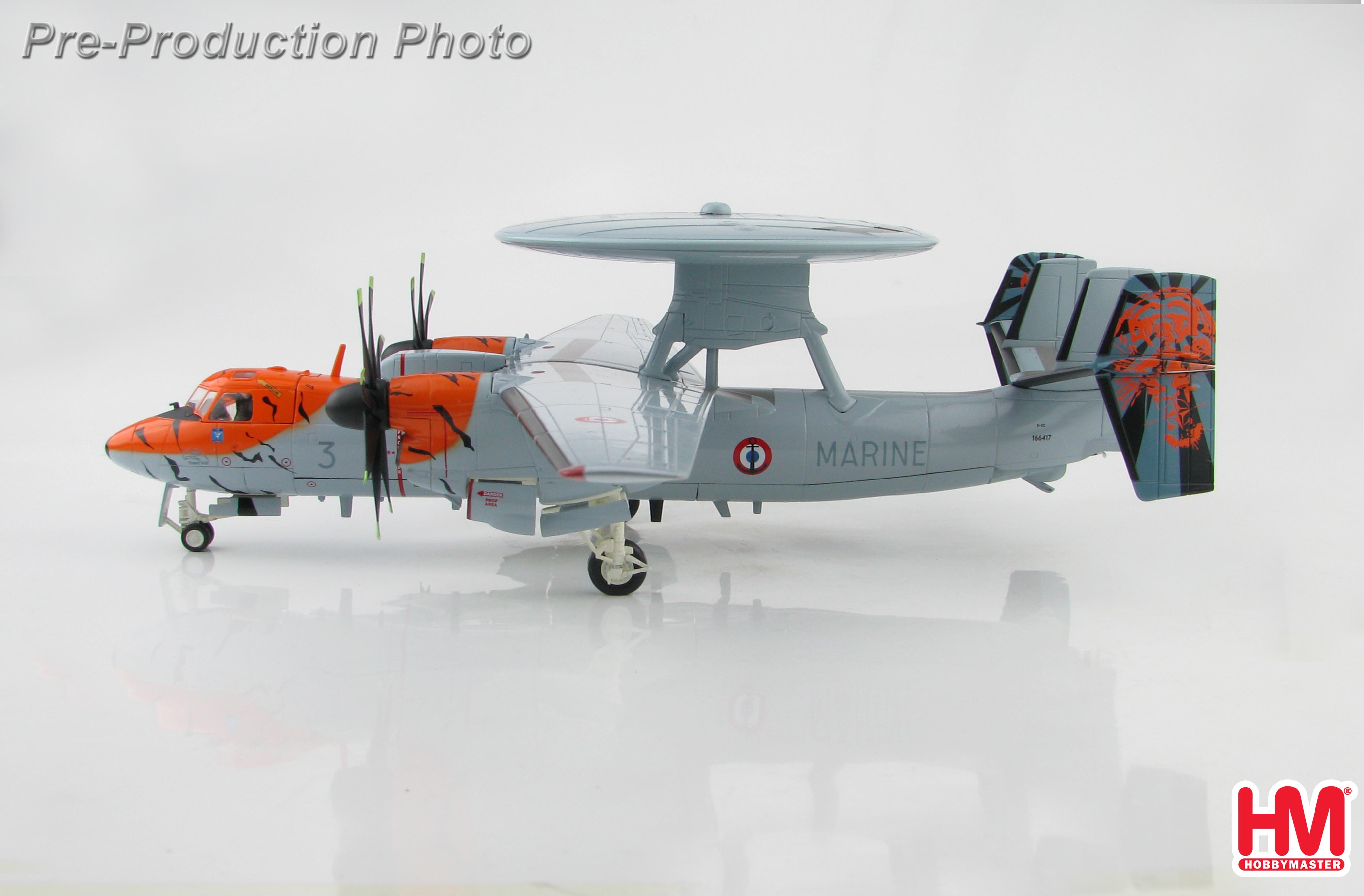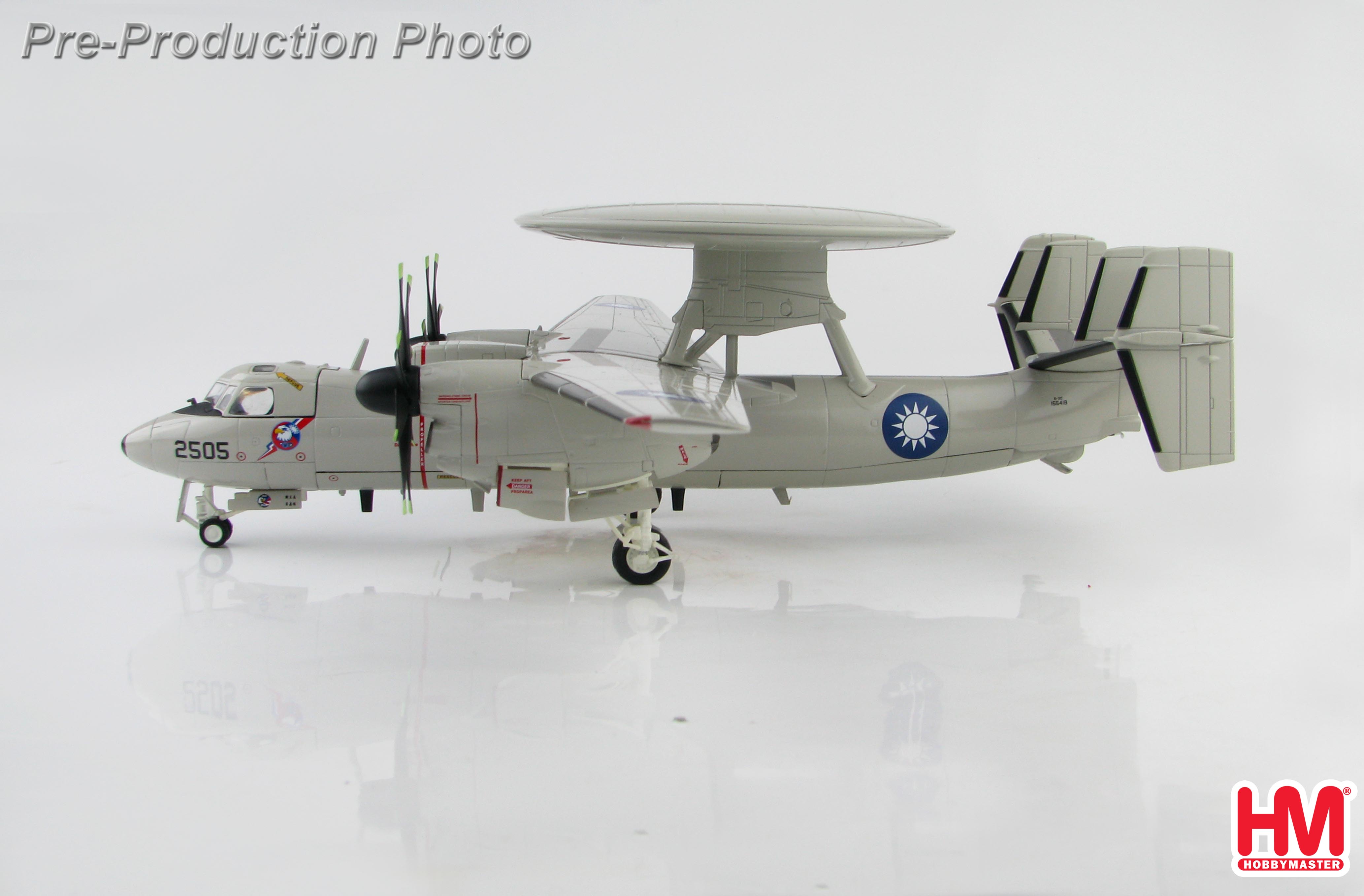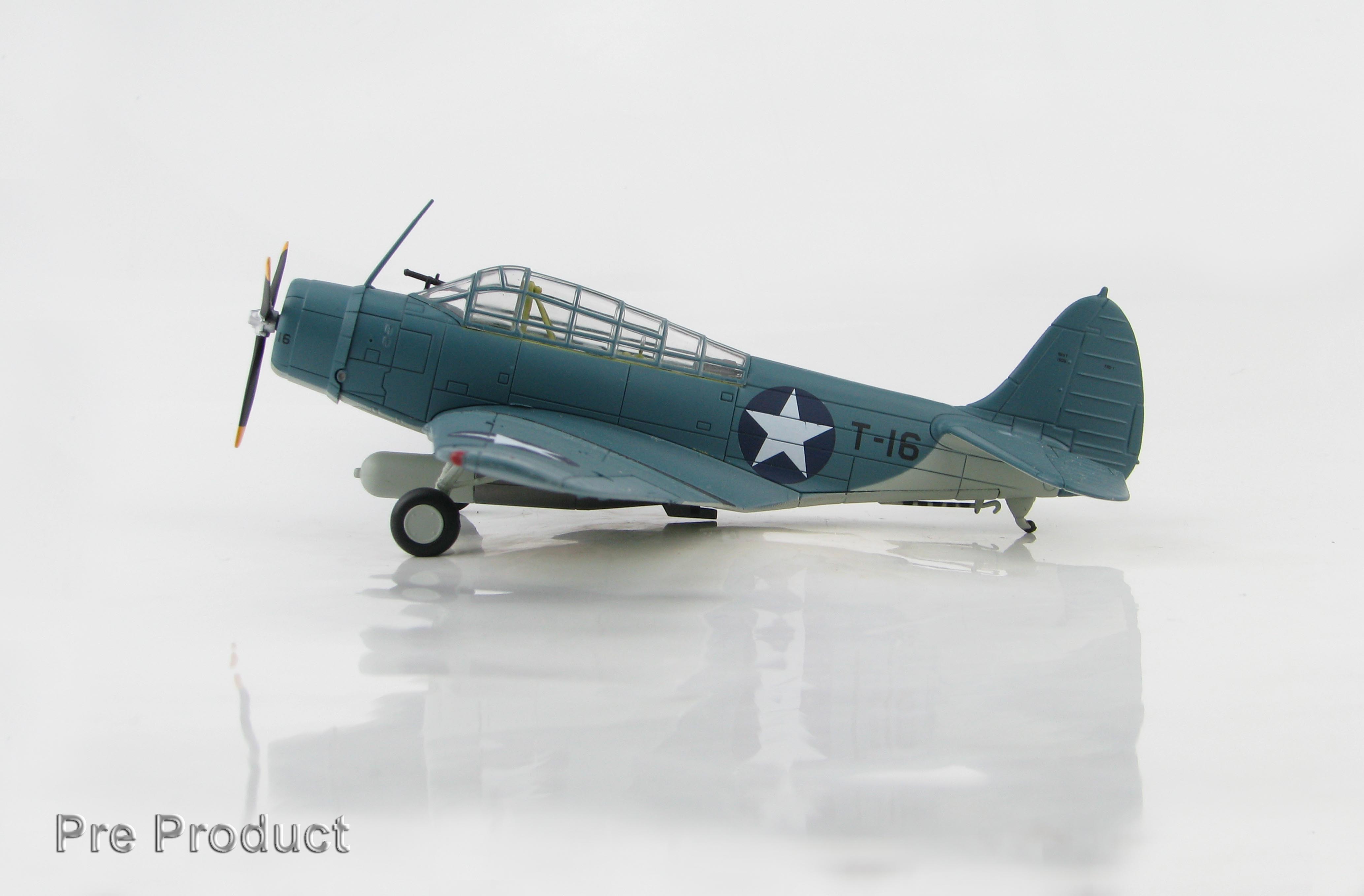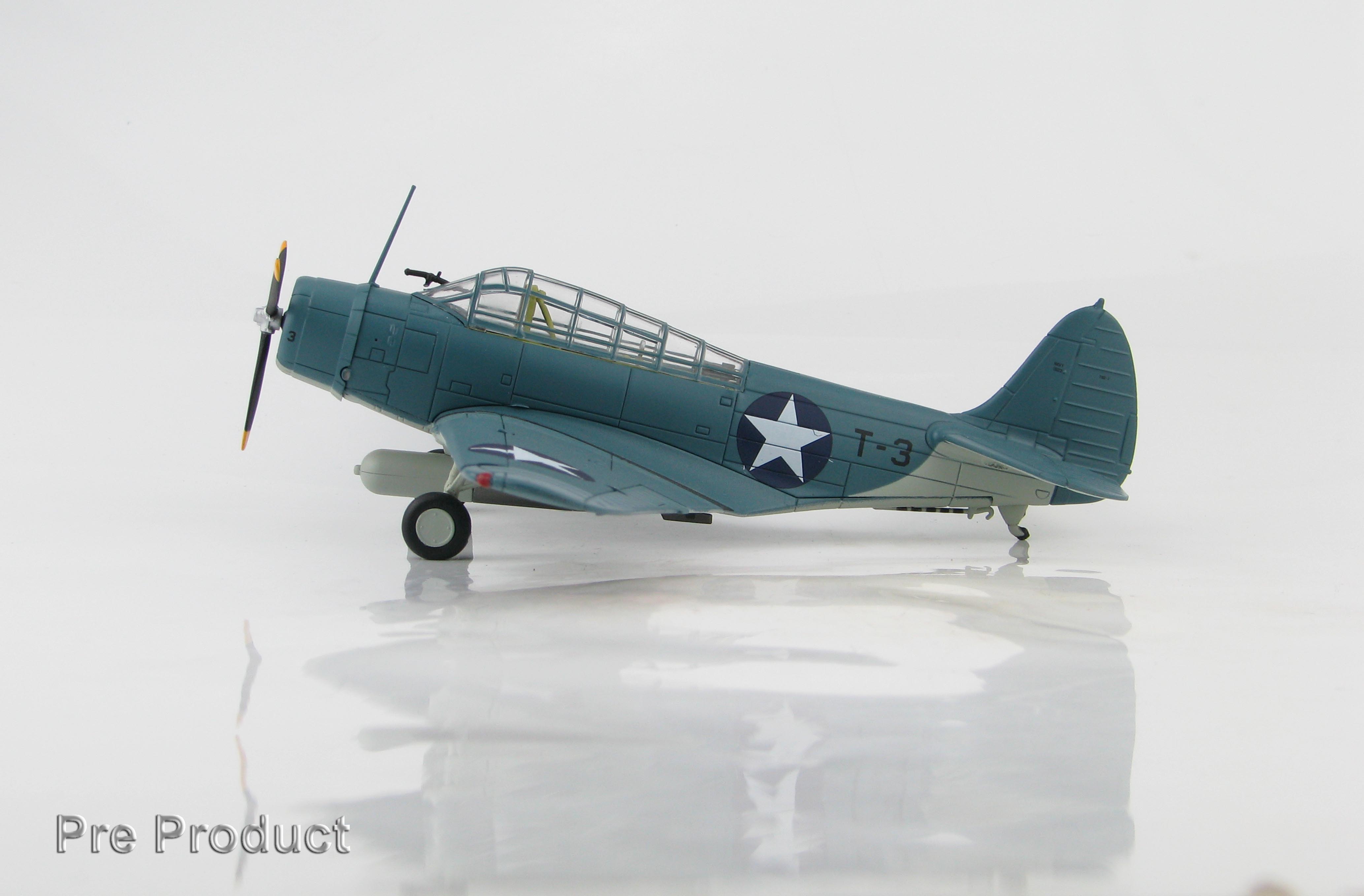
The Blue Angels in Diamond formation.
The Blue Angels flight demonstration squadron was formed in 1946 by the United States Navy. The unit is the second oldest formal aerobatic team (under the same name) in the world, after the French Patrouille de France formed in 1931. The Blue Angels’ McDonnell Douglas F/A-18 Hornets (numbered 1–6) are currently flown by five Navy demonstration pilots and one Marine Corps demonstration pilot.
The Blue Angels typically perform aerial displays annually in at least 60 shows at 30 locations throughout the United States and two shows at one location in Canada. The “Blues” still employ many of the same practices and techniques used in the inaugural 1946 season. An estimated 11 million spectators view the squadron during air shows from March through November each year. Members of the Blue Angels team also visit more than 50,000 people in schools, hospitals, and community functions at air show cities. Since 1946, the Blue Angels have flown for more than 505 million spectators.
As of November 2011, the Blue Angels received $37 million annually out of the annual DoD budget.
Mission
The mission of the United States Navy Flight Demonstration Squadron is “to showcase the pride and professionalism of the United States Navy and Marine Corps by inspiring a culture of excellence and service to country through flight demonstrations and community outreach.”
Airshows
Due to COVID-19, the 2020 show season has been truncated. Currently, their first show will be in Eau Claire, WI, June 13th-14th. The “Blues” perform at both military and non-military airfields, and often over major U.S. cities and capitals. Canada is also included in the Blue Angels schedule for air shows, such as the Greenwood, Nova Scotia, Canada Air Show Atlantic.

Blue Angels in Delta Formation
During their aerobatic demonstration, the Blues fly six F/A-18 Hornet aircraft, split into the diamond formation (Blue Angels 1 through 4) and the Lead and Opposing Solos (Blue Angels 5 and 6). Most of the show alternates between maneuvers performed by the Diamond Formation and those performed by the Solos. The Diamond, in tight formation and usually at lower speeds (400 mph), performs maneuvers such as formation loops, rolls, and transitions from one formation to another. The Solos showcase the high performance capabilities of their individual aircraft through the execution of high-speed passes, slow passes, fast rolls, slow rolls, and very tight turns. The highest speed flown during an air show is 700 mph (just under Mach 1) and the lowest speed is 120 mph. Some of the maneuvers include both solo aircraft performing at once, such as opposing passes (toward each other in what appears to be a collision course) and mirror formations (back-to-back, belly-to-belly, or wingtip-to-wingtip, with one jet flying inverted). The Solos join the Diamond Formation near the end of the show for a number of maneuvers in the Delta Formation.
The parameters of each show must be tailored in accordance with local weather conditions at showtime: in clear weather the high show is performed; in overcast conditions a low show is performed, and in limited visibility (weather permitting) the flat show is presented. The high show requires at least an 8,000-foot (2,400 m) ceiling and visibility of at least 3 nautical miles (6 km) from the show’s centerpoint. The minimum ceilings allowed for low and flat shows are 3,500 feet (~1 km) and 1,500 feet (460 m), respectively.

Water condensation in the strake vortices of a Blue Angels Hornet
Aircraft
The team has flown the McDonnell Douglas F/A-18 Hornet since 1986, which had served in the fleet and is constantly maintained and updated to be a combat-ready fighter aircraft. Modifications to each F/A-18 include removal of the weapons and replacement with a tank that contains smoke-oil used in demonstrations, and outfitting with a control stick spring system for more precise aircraft control input. Control sticks are tensioned with 35 pounds (16 kg) of force to allow the pilot minimal room for uncommanded movement of the aircraft.
The show’s narrator flies Blue Angel 7, a two-seat F/A-18D Hornet, to show sites. The Blues use this jet for backup, and to give demonstration rides to VIP civilians. Three back seats at each show are available; one goes to a member of the press, the other two to “Key Influencers”. The No. 4 slot pilot often flies the No. 7 aircraft in Friday’s “practice” shows.
The Blue Angels formerly used a United States Marine Corps Lockheed C-130T Hercules, nicknamed “Fat Albert”, for their logistics, carrying spare parts, equipment, and to carry support personnel between shows. Beginning in 1975, “Bert” was used for Jet Assisted Take Off (JATO) and short aerial demonstrations just prior to the main event at selected venues, but the JATO demonstration ended in 2009 due to dwindling supplies of rockets. “Fat Albert Airlines” flies with an all-Marine crew of three officers and five enlisted personnel. The current “Bert” (BUNO 164763) was retired from service in May 2019 with 30,000 flight hours. The Blue Angels will be replacing it with an Ex-RAF C-130J.
In August 2018, Boeing was awarded a contract to convert nine single-seat F/A-18E Super Hornets and two F/A-18F two-seaters for Blue Angels use. The converted aircraft are to be completed in 2021.

Lieutenant Commander Tyler Davies, Lead Solo (No. 5), with his crew chief
Team members
All team members, both officer and enlisted, pilots and staff officers, come from the ranks of regular Navy and United States Marine Corps units. The demonstration pilots and narrator are made up of Navy and USMC Naval Aviators. Pilots serve two to three years, and position assignments are made according to team needs, pilot experience levels, and career considerations for members. Other officers in the squadron include a Naval Flight Officer who serves as the Events Coordinator, three USMC C-130 pilots, an Executive Officer, a Maintenance Officer, a Supply Officer, a Public Affairs Officer, an Administrative Officer, and a Flight Surgeon. Enlisted members range from E-4 to E-9 and perform all maintenance, administrative, and support functions. They serve three to four years in the squadron. After serving with the squadron, members return to fleet assignments.
The officer selection process requires pilots and support officers (flight surgeon, events coordinator, maintenance officer, supply officer, and public affairs officer) wishing to become Blue Angels to apply formally via their chain-of-command, with a personal statement, letters of recommendation, and flight records. Navy and Marine Corps F/A-18 demonstration pilots and naval flight officers are required to have a minimum of 1,250 tactical jet hours and be carrier-qualified. Marine Corps C-130 demonstration pilots are required to have 1,200 flight hours and be an aircraft commander.
Applicants “rush” the team at one or more airshows, paid out of their own finances, and sit in on team briefs, post-show activities, and social events. It is critical that new officers fit the existing culture and team dynamics. The application and evaluation process runs from March through early July, culminating with extensive finalist interviews and team deliberations. Team members vote in secret on the next year’s officers. Selections must be unanimous. There have been female and minority staff officers as Blue Angel members, including minority Blue Angel pilot Lt. Andre Webb on the 2018 team. Flight surgeons serve a two-year term. The flight surgeon provides team medical services, evaluates demonstration maneuvers from the ground, and participates in each post-flight debrief. The first female Blue Angel flight surgeon was Lt. Tamara Schnurr, who was a member of the 2001 team.

Captain Eric Doyle, USN
The Flight Leader (No. 1) is the Commanding Officer and is always a Navy commander, who may be promoted to captain mid-tour if approved for captain by the selection board. Pilots of numbers 2–7 are Navy lieutenant commanders or lieutenants, or Marine Corps majors or captains. The No. 7 pilot narrates for a year, and then typically flies Opposing and then Lead Solo the following two years, respectively. The No. 3 pilot moves to the No. 4 (slot) position for his second year. Blue Angel No. 4 serves as the demonstration safety officer, due largely to the perspective he is afforded from the slot position within the formation, as well as his status as a second-year demonstration pilot.
Flight Leader/Commanding Officer
Commander Brian C. Kesselring is the 38th Blue Angels Flight Leader/Commanding Officer. He is from Fargo, N.D., and graduated from Concordia College, MN, with a Bachelor of Arts undergraduate degree with majors in Physics, Mathematics, and Business in 2000. After college, Kesselring went to Officer Candidate School in Pensacola, Florida, where he was commissioned as an ensign in the U.S. Navy in March 2001. Kesselring became a naval aviator in 2003, and has accumulated more than 4,000 flight hours and has 812 carrier-arrested landings. He also is a graduate and former staff instructor at the Navy Fighter Weapons School (TOPGUN). He joined the Blue Angels in September 2019, and took command of the squadron on 10 November for the 2020–2021 seasons. His military awards include the following decorations: Meritorious Service Medal, six Air Medals (Strike/Flight), three Navy and Marine Corps Commendation Medals, and two Navy and Marine Corps Achievement Medal.

Blue Angels perform at Miami Beach on Memorial Day
Training and weekly routine
Annual winter training takes place at NAF El Centro, California, where new and returning pilots hone skills learned in the fleet. During winter training, the pilots fly two practice sessions per day, six days a week, to fly the 120 training missions needed to perform the demonstration safely. Separation between the formation of aircraft and their maneuver altitude is gradually reduced over the course of about two months in January and February. The team then returns to their home base in Pensacola, Florida, in March, and continues to practice throughout the show season. A typical week during the season has practices at NAS Pensacola on Tuesday and Wednesday mornings. The team then flies to its show venue for the upcoming weekend on Thursday, conducting “circle and arrival” orientation maneuvers upon arrival. The team flies a “practice” airshow at the show site on Friday. This show is attended by invited guests but is often open to the general public. The main airshows are conducted on Saturdays and Sundays, with the team returning home to NAS Pensacola on Sunday evenings after the show. Monday is an off day for the Blues’ demonstration pilots and road crew. Extensive aircraft maintenance is performed on Sunday evening and Monday by maintenance team members.
Pilots maneuver the flight stick with their right hand and operate the throttle with their left. They do not wear G-suits because the air bladders inside repeatedly deflate and inflate, interfering with that stability. To prevent blood from pooling in their legs, Blue Angel pilots have developed a method for tensing their muscles to prevent blood from pooling in their lower extremities, possibly rendering them unconscious.
History
Overview
The Blue Angels were originally formed in April 1946 as the Navy Flight Exhibition Team.
The Flight Exhibition Team was first introduced as the Blue Angels during an air show in July 1946.
The first Blue Angels demonstration aircraft were navy blue (nearly black) with gold lettering. The current shades of blue and yellow were adopted when the first demonstration aircraft were transitioned from the Grumman F6F-5 Hellcat to the Grumman F8F-1 Bearcat in August 1946; the aircraft were an all-yellow scheme with blue markings during the 1949 show season.
The original Blue Angels insignia or crest was designed in 1949, by Lt. Commander Raleigh “Dusty” Rhodes, their third Flight Leader and first jet fighter leader. The aircraft silhouettes change as the team changes aircraft.
The Blue Angels transitioned from propeller-driven aircraft to blue and gold jet aircraft (Grumman F9F-2B Panther) in August 1949.
The Blue Angels demonstration teams began wearing leather jackets and special colored flight suits with the Blue Angels insignia, in 1952. In 1953, they began wearing gold colored flight suits for the first show of the season and or to commemorate milestones for the flight demonstration squadron.
The Navy Flight Exhibition Team was reorganized and commissioned the United States Navy Flight Demonstration Squadron on 10 December 1973.

The first Navy “Blue Angels” Flight Demonstration Squadron (1946–1947), assembled in front of one of their Grumman F6F Hellcats (l to r): Lt. Al Taddeo, Solo; Lt. (J.G.) Gale Stouse, Spare; Lt. Cdr. R.M. “Butch” Voris, Flight Leader; Lt. Maurice “Wick” Wickendoll, Right Wing; Lt. Mel Cassidy, Left Wing
1946–1949
The Blue Angels were established as a Navy flight exhibition team on 24th April 1946 by order of Chief of Naval Operations Admiral Chester Nimitz to generate greater public support of naval aviation. To boost Navy morale, demonstrate naval air power, and maintain public interest in naval aviation, an underlying mission was to help the Navy generate public and political support for a larger allocation of the shrinking defense budget. Rear Admiral Ralph Davison personally selected Lieutenant Commander Roy Marlin “Butch” Voris, a World War II fighter ace, to assemble and train a flight demonstration team, naming him Officer-in-Charge and Flight Leader. Voris selected three fellow instructors to join him (Lt. Maurice “Wick” Wickendoll, Lt. Mel Cassidy, and Lt. Cmdr. Lloyd Barnard, veterans of the War in the Pacific), and they spent countless hours developing the show. The group perfected its initial maneuvers in secret over the Florida Everglades so that, in Voris’ words, “if anything happened, just the alligators would know”. The first four pilots and those after them, were and are some of the best and most experienced aviators in the Navy.

Grumman F6F-5 Hellcats in 1946
The team’s first demonstration with Grumman F6F-5 Hellcat aircraft took place before Navy officials on 10 May 1946, and was met with enthusiastic approval. The Blue Angels performed their first public flight demonstration from their first training base and team headquarters at Naval Air Station (NAS) Jacksonville, Florida, on 15th and 16th June 1946, with three F6F-5 Hellcats (a fourth F6F-5 was held in reserve). On 15th June, Voris led the three Hellcats (numbered 1–3), specially modified to reduce weight and painted sea blue with gold leaf trim, through their inaugural 15-minute-long performance. The team employed a North American SNJ Texan, painted and configured to simulate a Japanese Zero, to simulate aerial combat. This aircraft was later painted yellow and dubbed the “Beetle Bomb”. This aircraft is said to have been inspired by one of the Spike Jones’ Murdering the Classics series of musical satires, set to the tune (in part) of the William Tell Overture as a thoroughbred horse race scene, with “Beetle Bomb” being the “trailing horse” in the lyrics.
The team thrilled spectators with low-flying maneuvers performed in tight formations, and (according to Voris) by “keeping something in front of the crowds at all times. My objective was to beat the Army Air Corps. If we did that, we’d get all the other side issues. I felt that if we weren’t the best, it would be my naval career.” The Blue Angels’ first public demonstration also netted the team its first trophy, which sits on display at the team’s current home at NAS Pensacola. During an air show at Omaha, Nebraska on 19th–21st July 1946, the Navy Flight Exhibition Team was introduced as the Blue Angels. The name had originated through a suggestion by Right Wing Pilot Lt. Maurice “Wick” Wickendoll, after he had read about the Blue Angel nightclub in The New Yorker magazine. After ten appearances with the Hellcats, the Hellcats were replaced by the lighter, faster, and more powerful F8F-1 Bearcats on 25th August. By the end of the year the team consisted of four Bearcats numbered 1–4 on the tail sections.
In May 1947, flight leader Lt. Cmdr. Bob Clarke replaced Butch Voris as the leader of the team. The team with an additional fifth pilot, relocated to Naval Air Station (NAS) Corpus Christi, Texas. On 7th June at Birmingham, Alabama, four F8F-1 Bearcats (numbered 1–4) flew in diamond formation for the first time which is now considered the Blue Angels’ trademark. A fifth Bearcat was also added that year. A SNJ was used as a Japanese Zero for dogfights with the Bearcats in air shows.

Grumman F8F Bearcats in “diamond” formation, 1947
In January 1948, Lt. Cmdr. Raleigh ” Dusty” Rhodes took command of the Blue Angels team which was flying four Bearcats and a yellow painted SNJ with USN markings dubbed “Beetle Bomb”; the SNJ represented a Japanese Zero for the air show dogfights with the Bearcats. The name “Blue Angels” also was painted on the Bearcats.
In 1949, the team acquired a Douglas R4D Skytrain for logistics to and from show sites. The team’s SNJ was also replaced by another Bearcat, painted yellow for the air combat routine, inheriting the “Beetle Bomb” nickname. In May, the team went to the west coast on temporary duty so the pilots and rest of the team could become familiar with jet aircraft. On 13th July, the team acquired, and began flying the straight-wing Grumman F9F-2B Panther between demonstration shows. On 20th August, the team debuted the panther jets under Team Leader Lt. Commander Raleigh “Dusty” Rhodes during an air show at Beaumont, Texas and added a 6th pilot. The F8F-1 “Beetle Bomb” was relegated to solo aerobatics before the main show, until it crashed on takeoff at a training show in Pensacola on 24th April 1950, killing “Blues” pilot Lt. Robert Longworth. Team headquarters shifted from NAS Corpus Christi, Texas, to NAAS Whiting Field, Florida, on 10th September 1949, announced 14th July 1949.
1950–1959
The Blues Angels pilots continued to perform nationwide in 1950. On 25th June, the Korean War started, and all Blue Angels pilots volunteered for combat duty. The squadron (due to a shortage of pilots, and no available planes) and its members were ordered to “combat ready status” after an exhibition at Naval Air Station, Dallas, Texas on 30th July. The Blue Angels were disbanded, and its pilots were reassigned to a carrier. Once aboard the aircraft carrier USS Princeton on 9th November, the group formed the core of Fighter Squadron 191 (VF-19), “Satan’s Kittens”, under the command of World War II fighter ace and 1950 Blue Angels Commander/Flight Leader, Lt. Commander John Magda; he was killed in action on 8th March 1951.

Support crew watches their team flying Grumman F9F-2 Panther jet fighters, 1952
On 25th October 1951, the Blues were ordered to re-activate as a flight demonstration team, and reported to NAS Corpus Christi, Texas. Lt. Cdr. Voris was again tasked with assembling the team (he was the first of only two commanding officers to lead them twice). In May 1952, the Blue Angels began performing again with F9F-5 Panthersat an airshow in Memphis, Tennessee. In 1953, the team traded its Sky Train for a Curtiss R5C Commando. In August, “Blues” leader LCDR Ray Hawkins became the first naval aviator to survive an ejection at supersonic speeds when a new F9F-6 he was piloting became uncontrollable on a cross-country flight. After summer, the team began demonstrating with F9F-6 Panthers.
In 1954, the first Marine Corps pilot, Captain Chuck Hiett, joined the Navy flight demonstration team. The Blue Angels also received special colored flight suits. In May, the Blue Angels performed at Bolling Air Force Base in Washington, D.C. with the Air Force Thunderbirds (activated 25th May 1953). The Blue Angels began relocating to their current home at Naval Air Station (NAS) Pensacola, Florida that winter, and it was here they progressed to the swept-wing Grumman F9F-8 Cougar. In December, the team left its home base for its first winter training facility at Naval Air Facility El Centro, California.
In September 1956, the team added a sixth aircraft to the flight demonstration in the Opposing Solo position, and gave its first performance outside the United States at the International Air Exposition in Toronto, Ontario, Canada. It also upgraded its logistics aircraft to the Douglas R5D Skymaster.

Grumman F9F-8 Cougar formation in 1956
In 1957, the Blue Angels transitioned from the F9F-8 Cougar to the supersonic Grumman F11F-1 Tiger. The first demonstration was flying the short-nosed version on 23rd March, at Barin Field, Pensacola, and then the long-nosed versions. The demonstration team (with added Angel 6) wore gold flight suits during the first air show that season.
In 1958, the first Six-Plane Delta Maneuvers were added that season.
1960–1969
In July 1964, the Blue Angels participated in the Aeronaves de Mexico Anniversary Air Show over Mexico City, Mexico, before an estimated crowd of 1.5 million people.
In 1965, the Blue Angels conducted a Caribbean island tour, flying at five sites. Later that year, they embarked on a European tour to a dozen sites, including the Paris Air Show, where they were the only team to receive a standing ovation.
In 1967, the Blues toured Europe again, at six sites.

Grumman F11F-1 Tiger, 1957–69
In 1968, the C-54 Skymaster transport aircraft was replaced with a Lockheed VC-121J Constellation. The Blues transitioned to the two-seat McDonnell Douglas F-4J Phantom II in 1969, nearly always keeping the back seat empty for flight demonstrations. The Phantom was the only plane to be flown by both the “Blues” and the United States Air Force Thunderbirds (the “Birds”). That year they also upgraded to the Lockheed C-121 Super Constellation for logistics.
1970–1979
In 1970, the Blues received their first U.S. Marine Corps Lockheed KC-130F Hercules, manned by an all-Marine crew. That year, they went on their first South American tour.
In 1971, the team which wore the gold flight suits for the first show, conducted its first Far East Tour, performing at a dozen locations in Korea, Japan, Taiwan, Guam, and the Philippines.

Members from the Imperial Iranian Air Force Golden Crown and the Blue Angels during the joint airshow; Kushke Nosrat Airbase, 1973
In 1972, the Blue Angels were awarded the Navy’s Meritorious Unit Commendation for the two-year period from 1 March 1970 to 31st December 1971. Another European tour followed in 1973, including air shows in Tehran, Iran, England, France, Spain, Turkey, Greece, and Italy.
On 10th December 1973, the Navy Flight Exhibition Team was reorganized and commissioned the United States Navy Flight Demonstration Squadron. The Blues mission was more on Navy recruiting.
In 1974, the Blue Angels transitioned to the new Douglas A-4F Skyhawk II. Navy Commander Anthony Less became the squadron’s first “commanding officer” and “flight leader”. A permanent flight surgeon position and administration officer was added to the team. The squadron’s mission was redefined by Less to further improve the recruiting effort.

All six Blue Angels Douglas A-4F Skyhawks executing a “fleur de lis” maneuver.
1980–1989
In 1986, LCDR Donnie Cochran, joined the Blue Angels as the first African-American Naval Aviator to be selected. He served for two more years with the squadron flying the left wing-man position in the No. 3 A-4F fighter, and returned to command the Blue Angels in 1995 and 1996.
On 8th November 1986, the Blue Angels completed their 40th anniversary year during ceremonies unveiling their present aircraft, the McDonnell Douglas F/A-18 Hornet. The power and aerodynamics of the Hornet allows them to perform a slow, high angle of attack “tail sitting” maneuver, and to fly a “dirty” (landing gear down) formation loop.

The Blue Angels Delta Formation
1990–1999
In 1992, the Blue Angels deployed for a month-long European tour, their first in 19 years, conducting shows in Sweden, Finland, Russia (first foreign flight demonstration team to perform there), Romania, Bulgaria, Italy, the United Kingdom, and Spain.
In 1998, CDR Patrick Driscoll made the first “Blue Jet” landing on a “haze gray and underway” aircraft carrier, USS Harry S. Truman (CVN-75).
On 8th October 1999, the Blue Angels lost two pilots. LCDR Kieron O’Connor and LT Kevin Colling were returning from a practice flight before an air show when their F/A-18B crashed in a wooded area of south Georgia.
2000–2009
In 2000, the Navy was conducting investigations in regard and connected to the loss of two Blue Angels pilots in October 1999. The pilots of the F/A-18 Hornet were not required to wear and do not wear g-suits.

F/A-18 Hornets performing in San Francisco
In 2006, the Blue Angels marked their 60th year of performing. On 30th October 2008, a spokesman for the team announced that the team would complete its last three performances of the year with five jets instead of six. The change was because one pilot and another officer in the organization had been removed from duty for engaging in an “inappropriate relationship”. The Navy said one of the individuals was a man and the other a woman, one a Marine and the other from the Navy, and that Rear Admiral Mark Guadagnini, chief of Naval air training, was reviewing the situation. At the next performance at Lackland Air Force Base following the announcement the No. 4 or slot pilot, was absent from the formation. A spokesman for the team would not confirm the identity of the pilot removed from the team. On 6th November 2008 both officers were found guilty at an admiral’s mast on unspecified charges but the resulting punishment was not disclosed. The names of the two members involved were later released on the Pensacola News Journal website/forum as pilot No. 4 USMC Maj. Clint Harris and the administrative officer, Navy Lt. Gretchen Doane.
On 21st April 2007, pilot Kevin “Kojak” Davis was killed and eight people on the ground were injured when Davis lost control of the No. 6 jet and crashed due to G-force-induced Loss Of Consciousness (G-LOC) during an air show at the Marine Corps Air Station Beaufort in Beaufort, South Carolina.
The Fat Albert performed its final JATO demonstration at the 2009 Pensacola Homecoming show, expending their eight remaining JATO bottles. This demonstration not only was the last JATO performance of the squadron, but also the final JATO use of the U.S. Marine Corps.
In 2009, the Blue Angels were inducted into the International Air & Space Hall of Fame at the San Diego Air & Space Museum.

F/A-18 Hornets at the 2019 Fort Worth Alliance Air Show
2010–2019
On 22nd May 2011, the Blue Angels were performing at the Lynchburg Regional Airshow in Lynchburg, Virginia, when the Diamond formation flew the Barrel Roll Break maneuver at an altitude lower than the required minimum. The maneuver was aborted, the remainder of the demonstration canceled and all aircraft landed safely. The next day, the Blue Angels announced that they were initiating a safety stand-down, canceling their upcoming Naval Academy Airshow and returning to their home base in Pensacola, Florida, for additional training and airshow practice. On 26th May, the Blue Angels announced they would not be flying their traditional fly-over of the Naval Academy Graduation Ceremony and that they were canceling their 28th–29th May 2011 performances at the Millville Wings and Wheels Airshow in Millville, New Jersey.
On 27th May 2011, the Blue Angels announced that Commander Dave Koss, the squadron’s Commanding Officer, would be stepping down. He was replaced by Captain Greg McWherter, the team’s previous Commanding Officer. The squadron canceled performances at the Rockford, Illinois Airfest 4th–5th June and the Evansville, Indiana Freedom Festival Air Show 11th–12th June to allow additional practice and demonstration training under McWherter’s leadership.

The “opposing knife-edge” pass. The far aircraft is actually slightly higher than the near one to make them appear in-line.
On 29th July 2011, a new Blue Angels Mustang GT was auctioned off for $400,000 at the Experimental Aircraft Association AirVenture Oshkosh (Oshkosh Air Show) annual summer gathering of aviation enthusiasts from 25th to 31st July in Oshkosh, Wisconsin which had an attendance of 541,000 persons and 2,522 show planes.
Between 2nd and 4th September 2011 on Labor Day weekend, the Blue Angels flew for the first time with a fifty-fifty blend of conventional JP-5 jet fuel and a camelina-based biofuel at Naval Air Station Patuxent River, Maryland. McWherter flew an F/A-18 test flight on 17th August and stated there were no noticeable differences in performance from inside the cockpit.
On 1st March 2013, the U.S. Navy announced that it was cancelling remaining 2013 performances after 1st April 2013 due to sequestration budget constraints. In October 2013, Secretary of Defense Chuck Hagel, stating that “community and public outreach is a crucial Departmental activity”, announced that the Blue Angels (along with the U.S. Air Force’s Thunderbirds) would resume appearing at air shows starting in 2014, although the number of flyovers will continue to be severely reduced.
On 15th March 2014, the demonstration pilots numbered 1–7 wore gold flight suits to celebrate the team’s “return to the skies” during their first air show of the season; there were only three air shows in 2013.
In June 2014, Captain Greg McWherter, flight leader of the Blue Angels for 2008–2010 and 2011–2012, received letter of reprimand from Adm. Harry Harris after an admiral’s mast for “failing to stop obvious and repeated instances of sexual harassment, condoning widespread lewd practices within the squadron and engaging in inappropriate and unprofessional discussions with his junior officers” during his second tour with the team.

Blue Angels aircraft 2018 parked before Airshow, Abbotsford, Canada 2018
In July 2014, Marine Corps Capt. Katie Higgins, 27, became the first female pilot to join the Blue Angels. In July 2015, Cmdr Bob Flynn became the Blue Angels’ first executive officer.
In July 2016, Boeing was awarded a $12 million contract to begin an engineering proposal for converting the Boeing F/A-18E/F Super Hornet for Blue Angels use, with the proposal to be completed by September 2017.
2020-2029
In response to the Coronavirus outbreak, the Blue Angels flew over multiple US cities as a tribute to healthcare and frontline workers.
The “Blues” will be transferring to Boeing F/A-18E Super Hornets starting in the 2021 show season.

The double farvel formation
Aircraft timeline
The “Blues” have flown eight different demonstration aircraft and six support aircraft models:
Drawing depicting all aircraft flown historically
Demonstration aircraft
Grumman F6F-5 Hellcat: June – August 1946
Grumman F8F-1 Bearcat: August 1946 – 1949
Grumman F9F-2 Panther: 1949 – June 1950 (first jet); F9F-5 Panther: 1951 – Winter 1954/55
Grumman F9F-8 Cougar: Winter 1954/55 – mid-season 1957 (swept-wing)
Grumman F11F-1 (F-11) Tiger: mid-season 1957 – 1968 (first supersonic jet)
McDonnell Douglas F-4J Phantom II: 1969 – December 1974
Douglas A-4F Skyhawk: December 1974 – November 1986
McDonnell Douglas F/A-18A Hornet (F/A-18B as #7): November 1986 – 2020[citation needed]Boeing F/A-18E Hornet (F/A-18F as #7): 2021–

“Section High Alpha”, the slowest maneuver of the show. Two hornets slow down to 125 knots (232 km/h) as they pitch up together to 45 degrees.
Support aircraft
JRB Expeditor (Beech 18): 1949–?
Douglas R4D-6 Skytrain: 1949–1955
Curtiss R5C Commando: 1953
Douglas R5D Skymaster: 1956–1968
Lockheed C-121 Super Constellation: 1969–1973
Lockheed C-130 Hercules “Fat Albert”: 1970–2019 (JATO usage was stopped in 2009)
Lockheed Martin C-130J Super Hercules “Fat Albert”:2020–present
Miscellaneous aircraft
North American SNJ Texan “Beetle Bomb” (used to simulate a Japanese A6M Zero aircraft in demonstrations during the late 1940s)
Lockheed T-33 Shooting Star (Used during the 1950s as a VIP transport aircraft for the team)
Vought F7U Cutlass (two of the unusual F7Us were received in late 1952 and flown as a side demonstration during the 1953 season but they were not a part of their regular formations which at the time used the F9F Panther. Pilots and ground crew found it unsatisfactory and plans to use it as the team’s primary aircraft were cancelled).

Blue Angels’ Marine Corps Lockheed C-130 Hercules “Fat Albert” conducting a RATO (rocket-assisted takeoff)
Blue Angels Aircraft available from Flying Tigers.
The following models are available to order from Flying Tigers. Please click on the photos below to go straight to the model of your choice.
Calibre Wings New Model Arrivals, New Announcements and re-stocks!
Check out the latest New Arrivals and re-stocks on Calibre Wings that have now been added to the Flying Tigers website. Please click on the images / links below to go to the model page.
I have also added 3 new models available to pre-order at the request of many collectors. Please click on the image of your choice to pre-order now.
Hobbymaster new model arrivals soon at Flying Tigers.
New Hobbymaster models are due in 2 weeks and are available to order at Flying Tigers today. Limited remaining stock availability… please click on the image or link below to order your now.
Flying Tigers will also consolidate your orders to save on postage costs across all brands !
Please click on the images / links below to go to the model of your choice, or CLICK HERE to see them all in the Future Models section.
Sorry the following models are sold out at pre-order stage. Only those customers who have pre-ordered will be supplied… HA6602 Eurofighter, HA6604 Eurofighter.
That is all for this week.
Thank you for reading this weeks Newsletter.
Richard
Flying Tigers.

